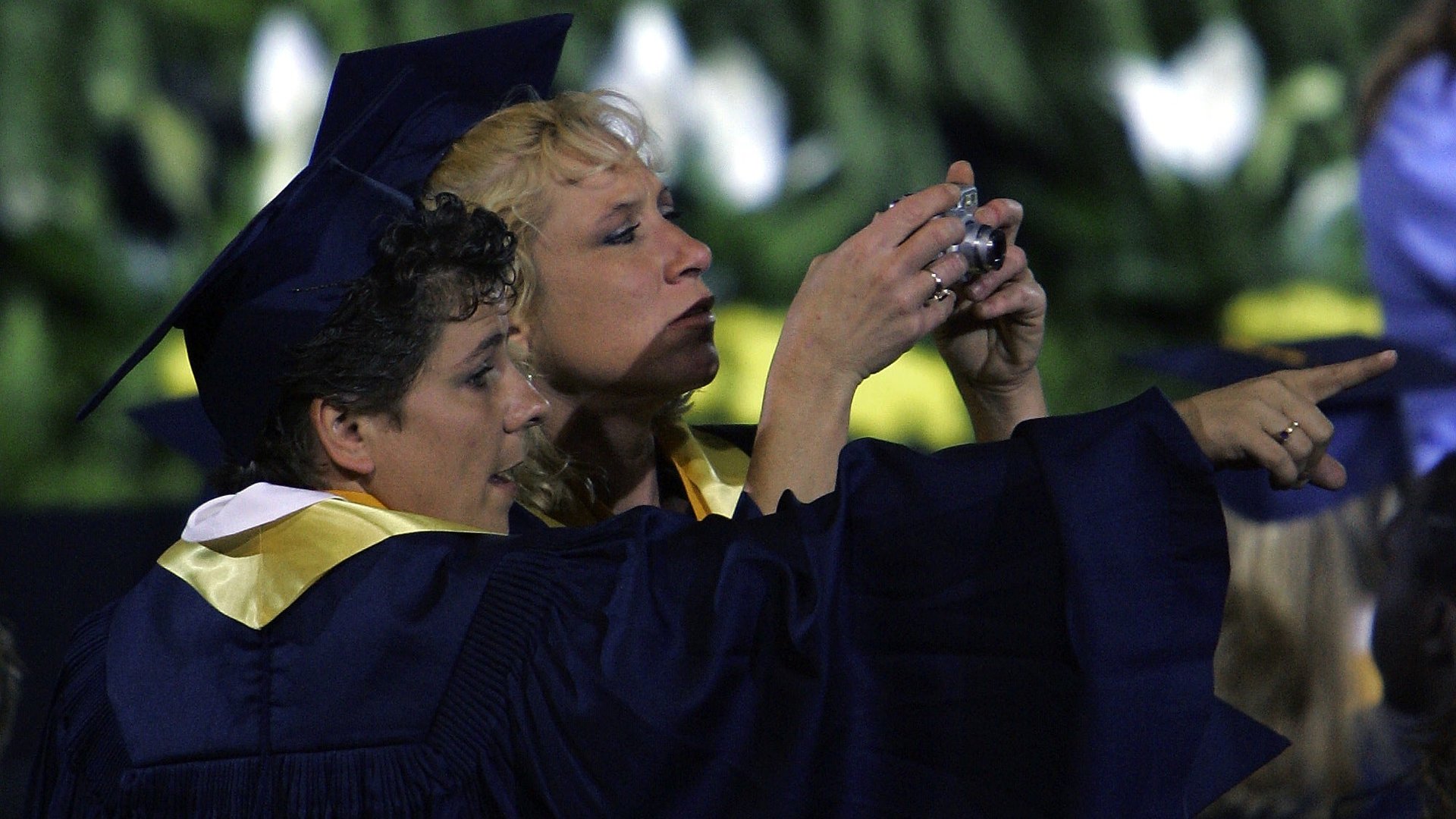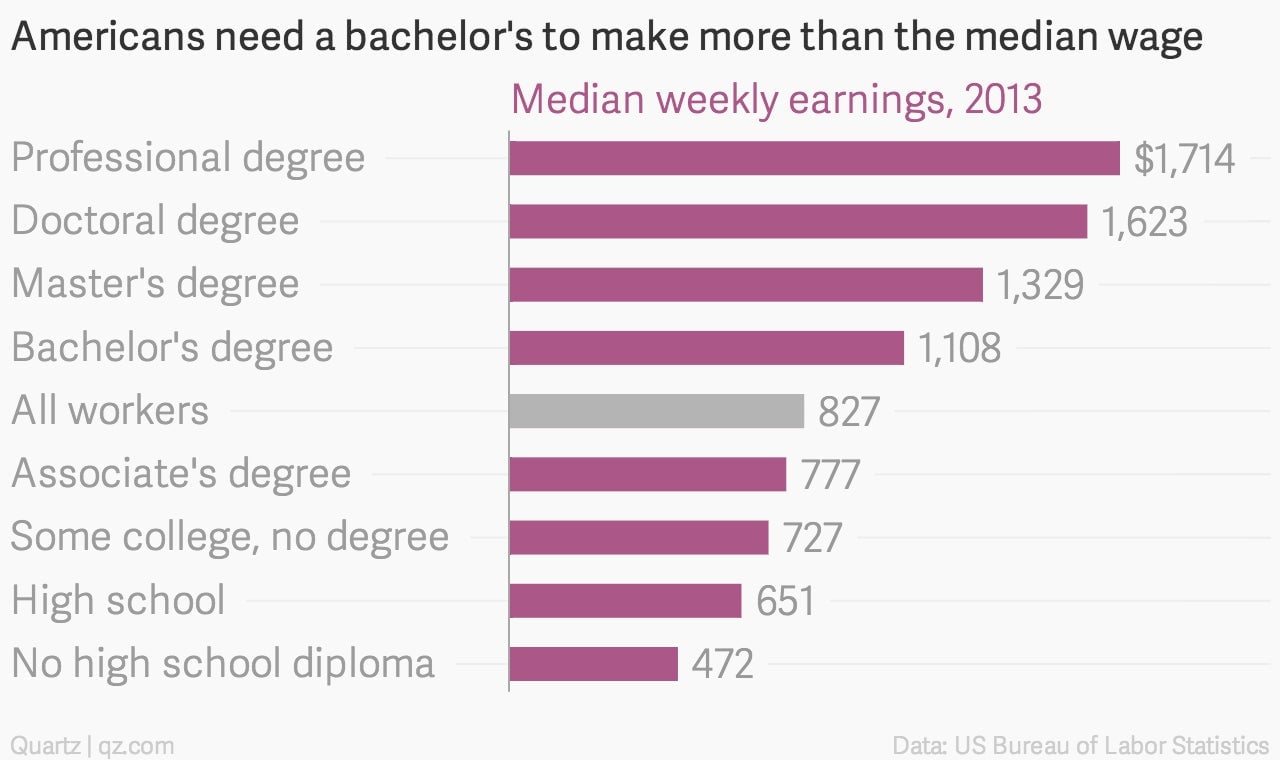Only 16% of US community college students go on to earn four-year degrees
This article has been updated.


This article has been updated.
US president Barack Obama wants to provide free community college to any American “who’s willing to work for it,” as a way to help shrink income inequality in the US. But how much will it close the gap?
It’s true that differences in education correlate with disparity in incomes and unemployment rates—generally, more educated people are less likely to be unemployed, and they earn more. Americans older than 25 with an associate’s degree had median weekly earnings of $777 in 2013, compared with $651 for those with only a high school diploma.
Both groups, however, made less than the overall median earnings for Americans, which was $827 a week. To cross that line, Americans need a bachelor’s degree.

Ideally, the ranks of American bachelor’s degree holders would increase if Obama’s proposal is successful—two years of free community college could allow students to save on a couple of years’ tuition at a four-year school, and indeed, one element of the plan includes ensuring that community college credits are fully transferrable to four-year schools.
But the road to completion of a four-year degree isn’t well traveled by Americans who start their education at community colleges.
Only 9.8% of students who left a two-year institution without a degree went on to graduate from a four-year college, according to a 2014 report (pdf, pg. 32) from the National Student Clearinghouse Research Center. The report looked at six-year outcomes for about 2.7 million first-time students seeking a degree, starting in the fall of 2008.
Another 6.4% obtained a two-year degree and also a four-year one, meaning that a total of 16.2%—or about one in six—community college students went on to get a four-year degree.
Obama will be speaking more about his plan in Tennessee at 1:20 p.m. EST. Watch here, or below.
Update: This story has been updated to include the most recent data available from the National Student Clearinghouse Research Center.